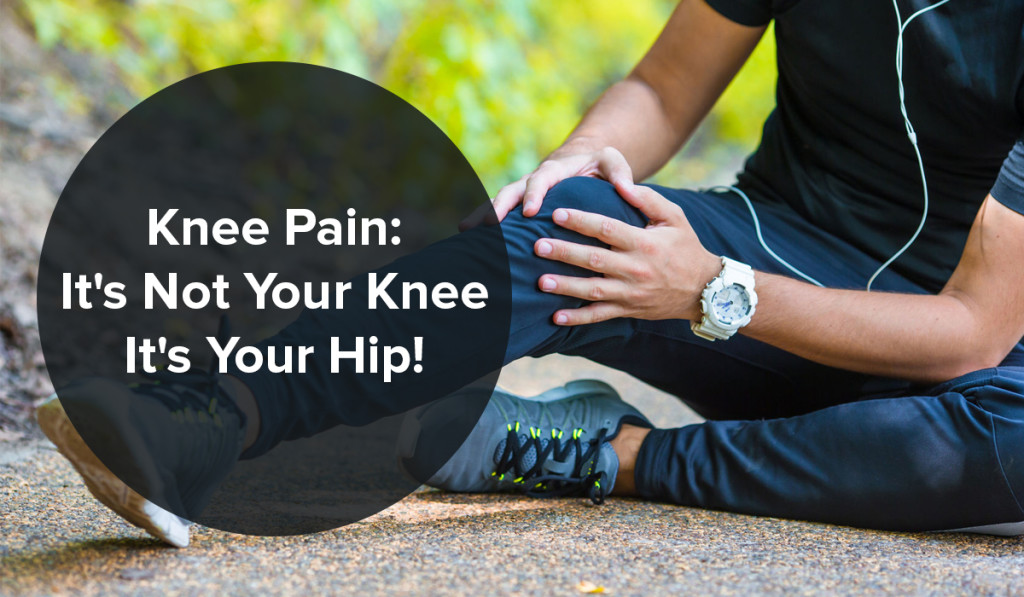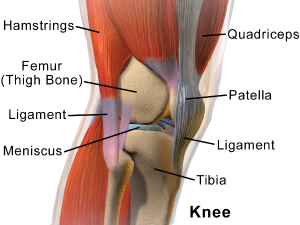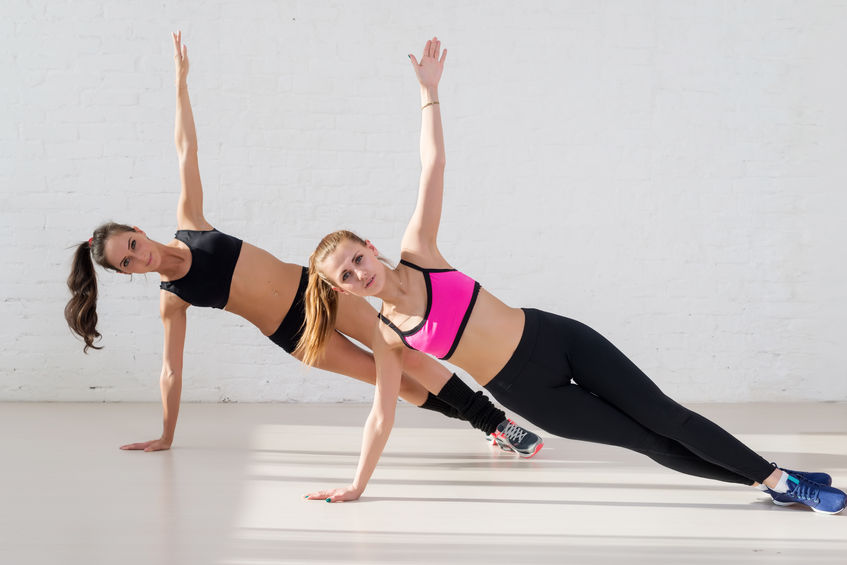Knee Pain: It’s Not Your Knee – It’s Your Hip!

When it comes to your knees, there’s a lot that could go wrong. The source of your knee pain could be one of many conditions including arthritis, a strain or sprain, jumper’s knee (patellar tendinitis), or runner’s knee. In addition, your knee pain may be caused by problems with your back, hips, or feet.
Here we focus on just one of the common sources of knee pain caused by issues in the hip. We also describe some of the exercises that your physiotherapist may prescribe if it’s determined that your hip is the cause of your particular kind of knee pain. Be sure to check with your doctor or physiotherapist to determine if these exercises are appropriate for your particular needs.
The Reason

When we walk, run, jump, or land, your foot naturally turns inward, a process called pronation. When your foot pronates, this starts a chain of events that travels up the leg and creates an inward rotation of the femur (thigh bone). Because the femur is also one of two bones of the hip joint, the movements and control of your femur has a significant effect on your knees. This inward twisting movement places strain on your tendons, ligaments, cartilage and kneecap alignment, which can lead to a sudden injury or an overuse injury over time. Many muscles in your legs can control this inward rotation of the femur. In current rehabilitation practices, there has been a large focus on the bum muscles for this control: the gluteals!
Treatment
In professional sports, it’s a well-known fact that athletes who strengthen their hip muscles considerably reduce their risk of sustaining knee injuries. Here is an article that goes into a little more depth regarding the relationship between glutes, hips and knees. Let’s look at three simple exercises to strengthen your hip muscles.
The Clamshell
A common and simple exercise to help keep the gluteals conditioned includes something called the ‘clamshell’. While lying on one side bend both knees to 90 degrees, and keep the feet in alignment with the hips. While keeping the pelvis still (belly button pointing slightly downward) and your feet together, raise the top knee. Completing 20 repetitions for three sets should make you feel as if someone poked you in the middle of your back pocket. Check out this brief video to make sure your technique is good:
The Sideways Walk
An advanced exercise for athletes that can simply be included as part of any warm up is sideways walking with a piece of tubing wrapped around the legs just above/below the knees. Again, complete 20 repetitions for three sets. Here’s another how-to video:
The Plank
If you’re familiar with the exercise called the plank (the one arm on your side version is called the side plank) has also been shown to be very effective in strengthening the lateral gluteals.

If completed one to two times per week, these exercises can not only prevent many different types of knee injuries, but can also improve performance for athletes and active individuals of all levels! Click here for a great guide of stretches and exercises by the American Academy of Orthopaedic Surgeons to strengthen your hip muscles.

Frequently Asked Questions
Knee pain is caused by a variety of factors, including arthritis, injury, and alignment issues with the hips, back, or feet.
The hip joint and surrounding muscles control the movement of the femur (thigh bone). Inward twisting movements of the femur in particular (pronation) places stress on the knees, and can lead to knee pain or injury over time.
Strengthening the hip joint and surrounding muscles, such as the gluteals, can prevent and treat knee pain caused by pronation (inward twisting of the legs).